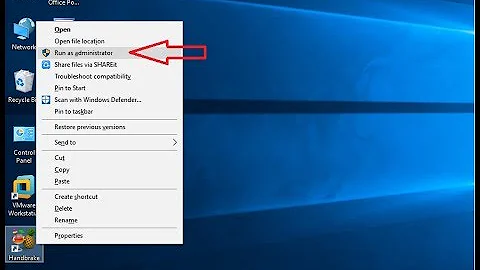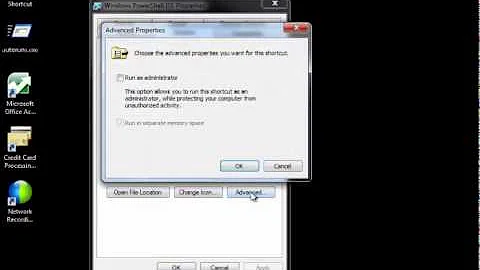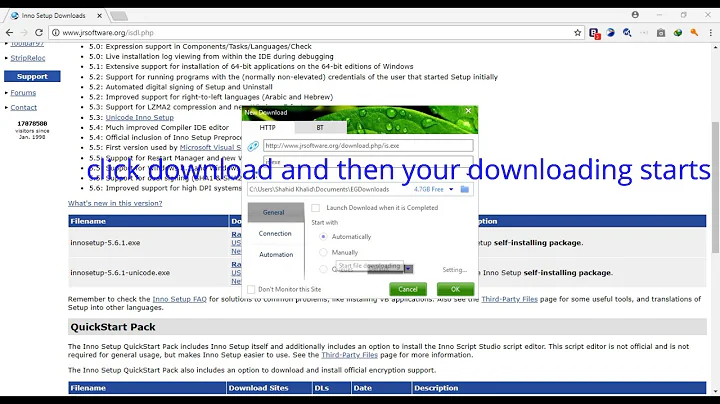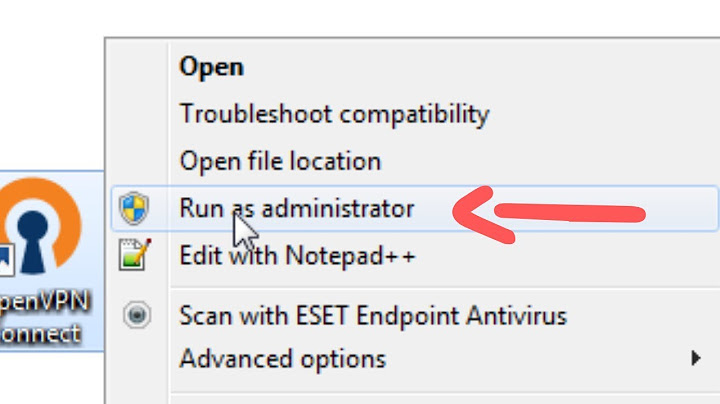How to set 'Run as administrator' on a file using Inno Setup
Solution 1
You can add a Registry entry in [Registry] Section that will set run as Administrator as a default action for running this app.
Example:
Root: "HKLM"; Subkey: "SOFTWARE\Microsoft\Windows NT\CurrentVersion\AppCompatFlags\Layers"; \
ValueType: String; ValueName: "{app}\tomcat7w.exe"; ValueData: "RUNASADMIN"; \
Flags: uninsdeletekeyifempty uninsdeletevalue; MinVersion: 0,6.1
Solution 2
If you really want to set the "Run as administrator" flag of the shortcut (as opposite to forcing the target application run with administrator privileges), you can use this code:
[Icons]
Name: "{userdesktop}\My Program"; Filename: "{app}\MyProg.exe"; \
AfterInstall: SetElevationBit('{userdesktop}\My Program.lnk')
[Code]
procedure SetElevationBit(Filename: string);
var
Buffer: string;
Stream: TStream;
begin
Filename := ExpandConstant(Filename);
Log('Setting elevation bit for ' + Filename);
Stream := TFileStream.Create(FileName, fmOpenReadWrite);
try
Stream.Seek(21, soFromBeginning);
SetLength(Buffer, 1);
Stream.ReadBuffer(Buffer, 1);
Buffer[1] := Chr(Ord(Buffer[1]) or $20);
Stream.Seek(-1, soFromCurrent);
Stream.WriteBuffer(Buffer, 1);
finally
Stream.Free;
end;
end;
This is based on:
- LinkFlags in [MS-SHLLINK]: Shell Link (.LNK) Binary File Format;
- How to create a Run As Administrator shortcut using Powershell;
- How can I use JScript to create a shortcut that uses "Run as Administrator"
Tested on Unicode version of Inno Setup. But it should, even more naturally, work on Ansi version too, though you should use Unicode version anyway.
If you want to allow user to execute the program at the end of the installation using a postinstall entry in [Run] section, you will of course need to explicitly request the elevation.
If the installer runs with Administrator privileges, you can simply add runascurrentuser flag:
[Run]
Filename: "{app}\MyProg.exe"; Description: "Launch application"; \
Flags: postinstall nowait skipifsilent runascurrentuser
If the installer runs without Administrator privileges, set Verb parameter to runas (for that you also need shellexec flag):
[Run]
Filename: "{app}\MyProg.exe"; Verb: runas; Description: "Launch application"; \
Flags: postinstall nowait skipifsilent shellexec
Though, make sure you have a very good reason to run your application with Administrator privileges. User applications should not need Administrator privileges. If they need it, it's usually a sign of a bad design. One common (bad) reason to want an application to run with Administrator privileges, is that the application needs to write to its installation folder.
See Application does not work when installed with Inno Setup
Solution 3
Add the runascurrentuser flag attribute to the [Run] section
Filename: "{app}\{#MyAppExeName}"; Description: "{cm:LaunchProgram,{#StringChange(MyAppName, '&', '&&')}}"; Flags: runascurrentuser nowait postinstall skipifsilent;
Related videos on Youtube
learnAndImprove
Updated on May 25, 2020Comments
-
learnAndImprove almost 4 years
I'm creating an installer using Inno Setup. As part of the install process I'm installing Tomcat. On Windows 7 I suffer from the problem described here:
http://blog.paulbouwer.com/2010/10/23/the-case-of-the-annoying-tomcat-6-monitor/
I can fix it by manually setting the 'Run as administrator' on
tomcat7w.exe(the issue and the root cause is the same for tomcat7 as well), but I don't know how to do it through Inno Setup.I'm finding threads that explain running
some_program.exeas administrator, but here the program is started when the Tomcat service starts (e.g. on machine start-up), so I need a way to flag it using Inno Setup to 'Run as administrator' rather than actually run it.-
 RobeN almost 11 yearsYou can add Registry entry in
RobeN almost 11 yearsYou can add Registry entry in[Registry]Section that will set to run as Administrator as default action for runnint this app. e.g.Root: "HKLM"; Subkey: "SOFTWARE\Microsoft\Windows NT\CurrentVersion\AppCompatFlags\Layers\"; ValueType: String; ValueName: "{app}\tomcat7w.exe"; ValueData: "RUNASADMIN"; Flags: uninsdeletekeyifempty uninsdeletevalue; MinVersion: 0,6.1 -
TLamapossible duplicate of How to create a shortcut to launch an App with admin privileges from the cmd-line?
-
DeannaErmm, app compatability shouldn't come into play for services. They will run as whatever user they are configured to, normally admin or local machine.
-
learnAndImproveWorked perfectly, thank you. I see now that I should have posted this question hours back :). If you want, post the comment as an answer so that I can accept it. Thanks again
-
-
Miral almost 11 yearsCompatibility settings are a band-aid, not a proper solution. The proper solution in this case is probably to run it as a service using admin credentials in the first place.
-
Winter almost 7 yearsWill launch the executable as administrator properly at the end of the setup but won't make the desktop's shortcut launch it as administrator.
-
Laurie Stearn almost 7 yearsFor Inno Devs: If the postinstall entry in [Run] section is actually another Inno Setup executable, define a flag to capture the return code of the (failing) child process with option to XAND it to the.return code of the parent install.
-
Martin Prikryl almost 7 years@LaurieStearn Why do you post a feature request here? Post it on Inno Setup site.
-
Laurie Stearn almost 7 yearsYes, of course. Should be XOR anyhow. A workaround for progress here.
-
traveler3468 almost 4 years@Winter I added
runascurrentuseras per answer and it asked me for permissions when executing the application from the shortcut.Inno Setup 6.0.2 -
SMGreenfield about 2 years@RobeN -- FYI -- just tested this, but adding this to the registry doesn't appear to either set the Run As Administrator checkbox, nor permit an elevated launch when double-clicking on the app.
-
 RobeN about 2 years@SMGreenfield Just tested with Windows 10 and it works well. I do not know if Windows 11 still supports same solution. P.S. Pay attention if the installer is 32 or 64-bit.
RobeN about 2 years@SMGreenfield Just tested with Windows 10 and it works well. I do not know if Windows 11 still supports same solution. P.S. Pay attention if the installer is 32 or 64-bit. -
SMGreenfield about 2 years@RobeN -- seems if it worked for you on Windows 10, it SHOULD work for Windows 11. I tried setting it on an .exe file that is a 32-bit executable. The installer itself is installing several .exe files, including a 64-bit .exe that can sub-launch that 32-bit .exe. Should it be HKLM or HKA (like all my file associations for the 32-bit app)? "RUNASADMIN" or "~ RUNASADMIN"?
-
 RobeN about 2 years
RobeN about 2 years~is not needed to my knowledge. The registry entry should go toHKLM, but not toWow6432Node. There is an easy way to check if you enter it correct way. Please set Admin Rights manually for the Executable and then go to Registry to check what entry has been added. Then check if the result of the installer is same.















